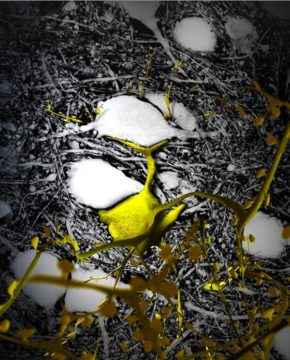Important information for the registered participants: an email with the links to access the training videos was sent on February 15th, 2020. Please check your inbox and SPAM folder!
If you did not receive it, please send us an email to contact@france-bioimaging.org
If you registered after February 14th, 2021, you will receive an email with the links within two days.
France BioImaging (FBI) is organizing a remote training on Light-Sheet Fluorescence Microscopy (LSFM), which enable 3D imaging of biological samples with unprecedented spatio-temporal resolutions and low perturbing effects.
LSFM methods actually cover a large variety of implementations which allow imaging a wide range of sample types, from single cell to whole organs or organisms both live and fixed. These new imaging capabilities are revolutionizing the way we visualize our samples and address biological questions. However, imaging with a light-sheet microscope raises many questions about the choice of the set-up depending on the sample to image, the sample preparation and mounting protocols or the data management (storage, visualization, quantification). Thus, it can be difficult to find its way through the numerous microscope implementations, protocols and tools that have been extensively developed over the last 20 years. We therefore decided to review all those questions in a remote training.
Our goal is to help people who want to jump into the world of 3D imaging and are seeking the best solution for their samples and biological questions. In that perspective, we will provide a comprehensive picture including all the possibilities and challenges regarding LSFM.
Format:
The training will be divided in 3 parts:
- Theoretical courses on LSFM
- Practical demonstrations of several LSFM implementations available throughout the FBI infrastructure
- Live online question-and-answer session
For the two first parts, videos will be available on a Youtube FBI channel. The participants will have 3 weeks, from the 15th of February to the 5th of March 2021, to watch those videos and will be invited to ask questions or comment.
FBI experts will then answer all questions during a live interactive video chat on the third week of the training (5th of March where participants will have the opportunity to directly interact with the experts.
Program:
1. Theoretical aspects of LSFM (15th to 26th of February 2021)
Here are the three main questions concerning the imaging with a light-sheet microscope: (1) what LSFM type should I use for my experiment, (2) How do I prepare and mount my sample, and (3) how to visualize and analyze my data sets. The first part of this training will address these three questions through three theoretical courses:
- Course 1: Theoretical principles and numerous implementations overview of LSFM
- P. Girard (Institut Jacques Monod, Paris-Centre)
- Course 2: Sample preparation and mounting principles – highlight on clearing approaches
- Carol Siret (CIML, Marseille)
- Course 3: Reconstruction, Visualization and Analysis software overview.
- Cesar Augusto Valades (Institut Curie, Paris-Centre),
2. Practical demonstrations of several LSFM implementation and experiments (15th of February to 5th of March 2021)
In the second part of the training we will propose several videos on various systems available in the FBI laboratories and imaging platforms covering diverse types of LSFM design and applications.
Each video will feature a specific set-up and experts will present how to run an experiment on them focusing on three main aspects: (1) sample preparation and mounting methods, (2) image acquisition processes, and (3) visualization of the data-sets.
- Lattice Light Sheet Microscope – (Home-made and 3i versions)
- Mathieu Ducros (BIC, Bordeaux)
- Ludovic Lecomte, Jean Salamero and Cesar Valaldes-Cruz (Institut Curie, Paris-Centre)
- Single-objective Single Plane Illumination Microscope (soSPIM) – Home-made
- Rémi Galland (IINS, Bordeaux)
- Dual inverted Single Plane Illumination Microscope (diSPIM) – 3i (Marianas)
- Elric Esposito et Julien Fernandes (Institut Pasteur, Paris-Centre)
- MuviSPIM – Luxendo
- Sylvain De Rossi (MRI, Montpellier)
- Ultramicroscope – LaVision Biotech
- Carol Siret/Mathieu Fallet (CIML, Marseille)
3. Questions & Answer interactive session (March 5th, 2021)
An online video session will conclude the training where FBI experts will answer all participants’ questions. You can ask questions either in advance in the comment box of the Youtube video, or during the Q&A session in a chat box. The Q&A session will be divided in sections, each related to a specific video.
To register:
In order to register to the Light-Sheet Fluorescence Microscopy remote training, please fill out the registration form available here.
Registration is free but mandatory in order to receive the links to the training videos.
Extended deadline: February 19th, 2021
We look forward to your participation !










